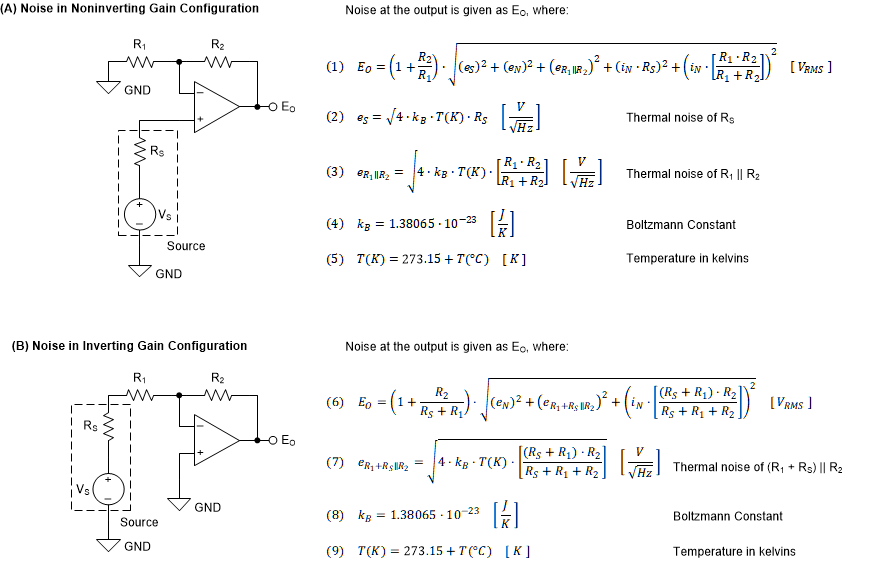SBOS830I September 2017 – October 2021 OPA189 , OPA2189 , OPA4189
PRODUCTION DATA
- 1 Features
- 2 Applications
- 3 Description
- 4 Revision History
- 5 Device Comparison Table
- 6 Pin Configuration and Functions
- 7 Specifications
- 8 Detailed Description
- 9 Application and Implementation
- 10Power Supply Recommendations
- 11Layout
- 12Device and Documentation Support
- 13Mechanical, Packaging, and Orderable Information
Package Options
Mechanical Data (Package|Pins)
Thermal pad, mechanical data (Package|Pins)
- DGK|8
Orderable Information
8.3.9 Basic Noise Calculations
Low-noise circuit design requires careful analysis of all noise sources. External noise sources can dominate in many cases; consider the effect of source resistance on overall op amp noise performance. Total noise of the circuit is the root-sum-square combination of all noise components.
The resistive portion of the source impedance produces thermal noise proportional to the square root of the resistance. This function is plotted in Figure 8-5. The source impedance is usually fixed; consequently, select the op amp and the feedback resistors to minimize the respective contributions to the total noise.
Figure 8-6 illustrates both noninverting (A) and inverting (B) op amp circuit configurations with gain. In circuit configurations with gain, the feedback network resistors also contribute noise. In general, the current noise of the op amp reacts with the feedback resistors to create additional noise components. However, the extremely low current noise of the OPAx189 means that the current noise contribution can be neglected.
The feedback resistor values can generally be chosen to make these noise sources negligible. Low impedance feedback resistors load the output of the amplifier. The equations for total noise are shown for both configurations. For additional resources on noise calculations visit TI's Precision Labs Series

where:
- en is the voltage noise spectral density of the amplifier. For the OPAx189 series of operational amplifiers, en = 5.2 nV/ √ Hz at 1 kHz.
- in is the current noise spectral density of the amplifier. For the OPAx189 series of operational amplifiers, in = 165 fA/ √ Hz at 1 kHz.